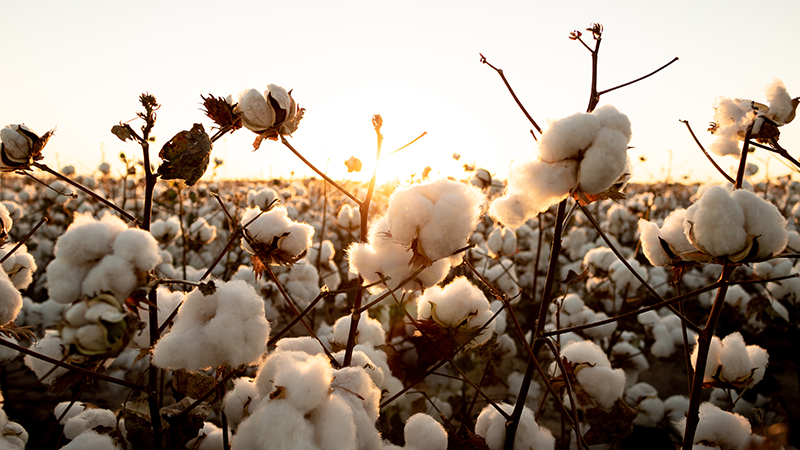Cleveland: Cotton Demand and Markets Trending Up
Bottom line, the cotton market is going higher – in fact, higher to the extent that U.S. planted acreage will expand in 2016.
Certainly the market knows what it is doing – the market always knows. I am a bit perplexed, but people typically are. Yet, I have only a few facts, and, like Pogo, a lot of ideas.
Demand is a problem, but it is only a minor problem. It is growing and will continue to do so. Of course, that also assumes the cotton industry will get off its duff and invest in the future of cotton. Correct that – demand will expand regardless, maybe just not as fast as we wish. Demand is slow, but demand is growing.
Newspaper headlines have China crashing any day now. China is growing at a very healthy rate, just not at its typical double digit rate. Investors are nervous. That does make for very nervous markets.
The nervous cotton market has spooked mills, governments, merchants and the like. Nevertheless, textile mills have done just fine this season sitting back, biding their time and buying on an as-needed basis. That plan has worked for the past twelve months. Why change? There is no reason, so the mill hand-to-mouth buying will stay with us. Demand does need a boost, but pent-up demand is showing signs to bursting out at the seams.
Oil made a long term low recently, and the Chinese oil industry jumped in and continues to purchase every single barrel they can get their hands on. That is, the government is planning for the future expansion of its economic base. The Chinese governing hierarchy may be fighting about the country’s economy, but the economy remains strong, as measured in terms of month over month economic growth. Do not think that China is near an economic crisis.
Cotton demand is there and beginning to grow. Too, the cotton industry will have to wake up and aggressively join in the demand game for non-wovens – among other things, diapers for old folks like me. Right now, if I needed one, I would be forced to wear ones made of chemicals. I could wear one made of cotton if the cotton industry decided it wanted to participate in the 41 million bale market rather than abdicate the market to chemical fibers.
The cotton industry does not participate in the non-woven market at present, unless you call less than one half of one percent as participating. I do not. And anyway, when I participate, I like to win, not just play for a little handful of percentage points.
Okay, let me discuss weather or something else. USDA field enumerators have done their work. The respective state offices will complete their work early this week and forward the “cotton crop” to Washington for final tabulation. Then, on September 11, USDA-NASS will give us its estimate of the 2015 cotton crop.
The August estimate of 13.1 million bales will change. The merchandising industry is adamant that the crop size will be up at least one million bales to 14.1 million. The trade has done its best to push this market down and continues to call for lower prices. Thus, should the upcoming USDA estimate be 13.7 million bales or lower, then I feel it will be taken as very bullish. Yet, if the estimate does increase, the more important carryover level will, most likely, be unchanged. If the crop size is increased, exports and carryover will be much the same as currently estimated.
Either way, the U.S. cotton supply-to-use ratio will continue to be tight and exhibit its tightness via pushing prices higher. Of course, I still think the August crop estimate is solid, and the new estimate will range from 12.7 to 13.5 million bales.
Also this week (but not the USDA September report), look at the various long range weather forecasts. All are in alignment now. The long forecast temperatures drop is due to come in West Texas next week, moisture is due to arrive, and the remainder of the growing season will be characterized by cool, wet weather, compared to the norm – definitely neither cotton growing, nor cotton harvesting, weather. Hopefully, that will not happen. But the weather folks have been very accurate with their forecast for the Texas plains.
Halfway around the world, the same analysts have called the weak Indian monsoon with complete accuracy all season. This week, most other weather analysts echoed the call. In fact, the monsoon is beginning to withdraw from Northern India (where most of the cotton is produced), basically leaving it high and dry in the middle of the season. Southern India will still get some additional decent monsoon activity, but, again, it has little cotton. Thus, the Indian crop looks to be at least another one million bales below the current USDA estimate.
The primary fact is that the availability of machine-harvested quality cotton continues to shrink. Too, the availability of cotton outside China continues to shrink.
The shrinking crop on the Texas plains, coupled with the declining Indian crop, will push cotton prices higher.









